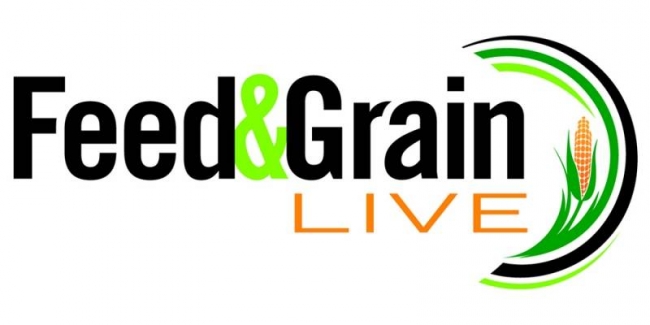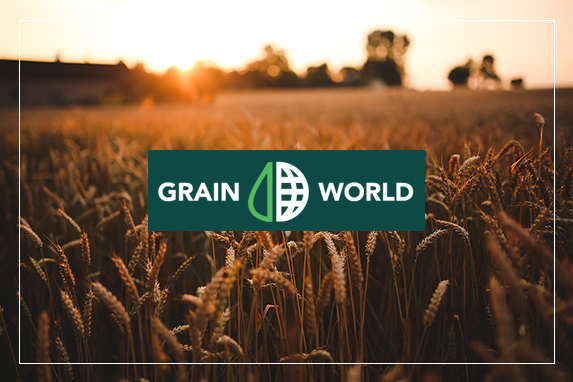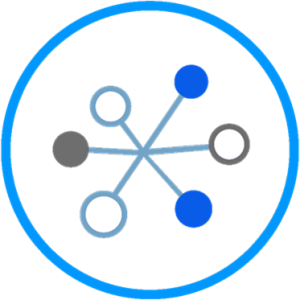Visit us at Feed & Grain LIVE 2019!

Agriflo is proud to be exhibiting, and speaking at Feed & Grain LIVE 2019!
The recent glysophate residue issues in grain, and the lettuce recall across North America both tell us a lot about how the tracking and traceability in our food and feed sectors is working, as well as what government, customers and end consumers expect. FISMA, SQF, BRC, AFRPS and other standards form the lowest set of expectations that we must achieve, but they themselves are substantially less than consumers are already demanding – and those demands are accelerating at an exponential rate. There are many challenges within an organization to addressing these issues, but there is an even greater challenge relating to doing so across all of the organizations in the supply chain. This is compounded by the decentralized nature of the agriculture sector, as well as a healthy distrust that most in the sector have for centralized authority. The traditional methods of addressing issues of intra-organizational data collection and exchange have been focused around large, centralized entities controlling the media of communication – and we all know that he who controls the media, controls the message. This is, and has been a major impediment to establishing an effective supply chain wide traceability solution – not only in agriculture, but in most other sectors as well. The arrival of Blockchain technology is a major breakthrough that eliminates almost all of these negatives, and provides a neutral playing field where everyone from the largest global food company to the smallest independent elevator can equally participate. The Blockchain revolution has already caused substantial change in the finance and banking industries, and major blockchain related changes are already happening in food. In this session we will talk about what exactly Blockchain is, how it works, what the applicability to Feed & Grain is, why adoption of this technology is going to happen much faster than you might think [hint: it already is!], and why organizations need to be preparing for it now.
For more information on this, or other issues pertaining to technical revolutions in tracking & traceability in Feed, Food and Grain.. contact us or visit us at Booth 52 at Feed & Grain Live 2019 in Altoona Iowa.. January 8-10, 2019!
http://live.feedandgrain.com
Visit us at GrainWorld 2018, Booth #2

Agriflo is proud to be a sponsor of the 2018 GrainWorld Conference taking place Nov 13 & 14 in Winnipeg, MB at the RBC Convention Centre!
Come by and visit us at Booth #2 to learn more about digital transformation in the agribusiness sector. And, when you stop by, enter to win 2 tickets to the hotly anticipated NHL game on Nov 14th between the Winnipeg Jets and the Stanley Cup Champion Washington Capitals! Drop your card in the box to win!
What is Agriflo?
We know and love agribusiness. We’d love to talk to you and learn more about your business.
Call us at 1-888-3444-2652, Follow us on twitter @agri_flo, or Find us on Linked-in, Facebook, or our website http://www.agriflo.biz !
Technology and Agriculture

Technology and Agriculture

Technology has drastically impacted Agriculture in many different ways over the last several years. Examples of this impact can be seen with the use of drones by farmers, Real-time analytics that can be pulled from precision Agriculture and even in Agri-processors who have Automation in their facilities to help receive grain with more efficiency.
With new technology moving in fast for Agri-Processing there is definitely an informational gap occurring between the processing plant and the office. This can detrimentally impact the company’s bottom line. This separation is like a fog (or White Space), where you and your employees really do not know what is happening in the fog at any given point in time.
Delays can impact:
- People
- Process
- Tools
These delays can be reflected negatively in inventory accuracy, operational efficiency or even compliance and food safety issues. Any of these problems are cause for concern , but what really hurts the processor is the inability for real-time decision making.
Communication:

Communications need to be linked between the plant and the office because when they are not your company creates White Space. With white space, a company’s communication becomes very “silo’d” with “me” centric tools and this can cause disjointed workflows. A great example of “me” centric tools are email clients such as Outlook or Outlook 365. These programs serve a purpose in our individual workflow and help us in our day-to-day flow, but as a team platform they can be quite limiting. The “me” centric tools cause a huge amount of repetition work, where employees are touching items 4-5 times, or reworking and reworking in order to push items forward. This cycle can lead to frustration at the end of the day, processes can be stalled and employees can feel that they are on a never ending treadmill with no forward momentum to complete tasks.
By connecting your “me” centric tools to workflow automation, accounting systems and even to your Customer forward facing CRM (Customer Relation Manager), it can improve your communication 10 fold, and allow you to be more proactive in your decision making.
Workflow:
If there is White Space between the Processing plant and the office there will be a definite impact on workflow. Delays in processing can impact the bottom line or the company’s key performance indicators (KPIs). The goal becomes reducing white space by connecting the tools, processes and people to the workflow.
This can be achieved by integrating existing tools to help you with the interoperability of the company. Or by reviewing your current needs and looking at your future needs to help you find tools that may be a better fit for your company. By closing the loop of the workflow, it will allow you to lean out processes, empower your people and more importantly, grow your business.
Getting rid of, or reducing White Space can be a challenge because of processes that may not have changed in several years or may be from a time where you were managing your business with much smaller sales volume. If so, this is the best time to review your processes, and see what needs to be changed, improved or even removed. If your company is planning to change processes one key point that will ensure higher rates of success is to engage your employees and team members in this process. They have the experience and likely know better than anyone else, what already works and what doesn’t.
Technology:
Challenges that can make existing problems worse is when a company runs to Technology and throws it at their problems hoping that it is a quick fix. This is a dangerous decision and often leads to failed technological implementations, or high staff turnover. If new technology is the solution for your company then it is wise to slow down before you speed up. There has to be a deep drive to review your company’s needs (People, Process and Tools). Luckily, there are tools that can help you with this review and will give you the extra knowledge to make an informed decision. It is always better to change things in small bite size pieces so that you can really see the outcomes and it will also provide your company time to adjust without hurting your business.
Why should we connect?

There are many different types of challenges facing those of us in Agribusiness; we have challenges with Customers, Producers and even getting our product in and out in a timely manner. Our decisions have to be quick and accurate, which means that our decisions have to be made in real time. The world appears to be speeding up and our decision making has to follow. The biggest problem is what information do we need to make real time decisions? You may have heard of concepts like Big Data, Internet of Things, connectivity, inter-operability and Industry 4.0. Which are the ones you should consider?
1) Connectivity:
In order to gather the best information, we need to make sure that we are connected. This works best in closed loop systems so that all the important information is being captured. In recent years the ability to have a closed loop system has become far easier with PLC (Programmable Logic Controllers) and Automation Controls on the farm and in the processors’ plant. If you haven’t already connected these areas then it should be a top priority, because once you connect these areas together it will allow you to understand how your company is working.
An issue of connectivity is that there can be a shifting constraint. A shifting constraint occurs when you start connecting the pieces to close the loop and unsurprisingly problems will be found in your current processes, these are the shifting constraints. As you tackle and resolve the constraints as you discover them you may notice a shift to a new constraint. This eye opening process will be resolved once all the problems are corrected, allowing a much more efficient process for your everyday activities. This may be a little bit scary or may take some time and effort from employees and management, but I always tell people it is better to slow down in order to speed up. The result will be totally worth it.

2) Inter-operability:
Inter-operability is different from connectivity because it may not be a seamless integration. The concept of inter-operability is knowing that you have data that could be used in your decision making but realizing that you may have to pull this information from the source using third party tools or the ability to export. This can be a small extra step. However, implementing this type of communication strategy, even if they are third party tools will allow you to get information and data that can be vital when making rapid decisions and allows you the ability to stop relying on historical information.
These types of solutions can have challenges because sometimes the pieces may not be able to pull the information that you really need or want. This is when a cost benefit will have to be examined and a decision will have to be made about if it is worth while to make small changes and put something in place to help with the capture of information. Or do you leave it until it makes sense to change in a big way. In either scenario, you will need to be gathering information to help you decide.
3) Big Data:
Big Data is a very popular concept in the business world today. The idea that we should always be plugged in and pulling information from all the sources we can is pervasive and encompassing. The idea is that – More information is always better! However, is this actually true? Sometimes this is not always the case. Companies and Individuals can experience a situation called Analysis Paralysis. This occurs when we are getting too much information and then we can not even fathom where to start. I have come across this situation multiple times, people believe that if they pull every bit of data that they will find some pattern, or trend that will give them the “A-ha moment” to solve their problems.
However, the trick to Big Data is knowing what we need to measure and then to start from there! Even if we only focus on our top three issues in our business, imagine how much of a benefit that would be! In this case you could actually do more with less!
In closing the key to success in connectivity and Big Data is to start small and work towards your goal! By taking off bite size pieces, it makes the goal of true connectivity achievable for any company.
